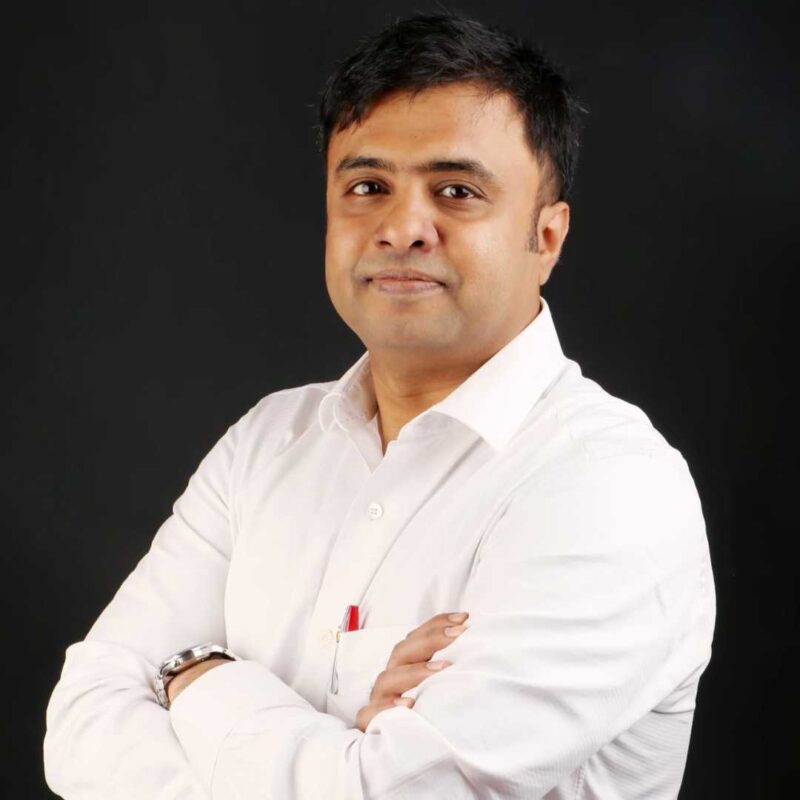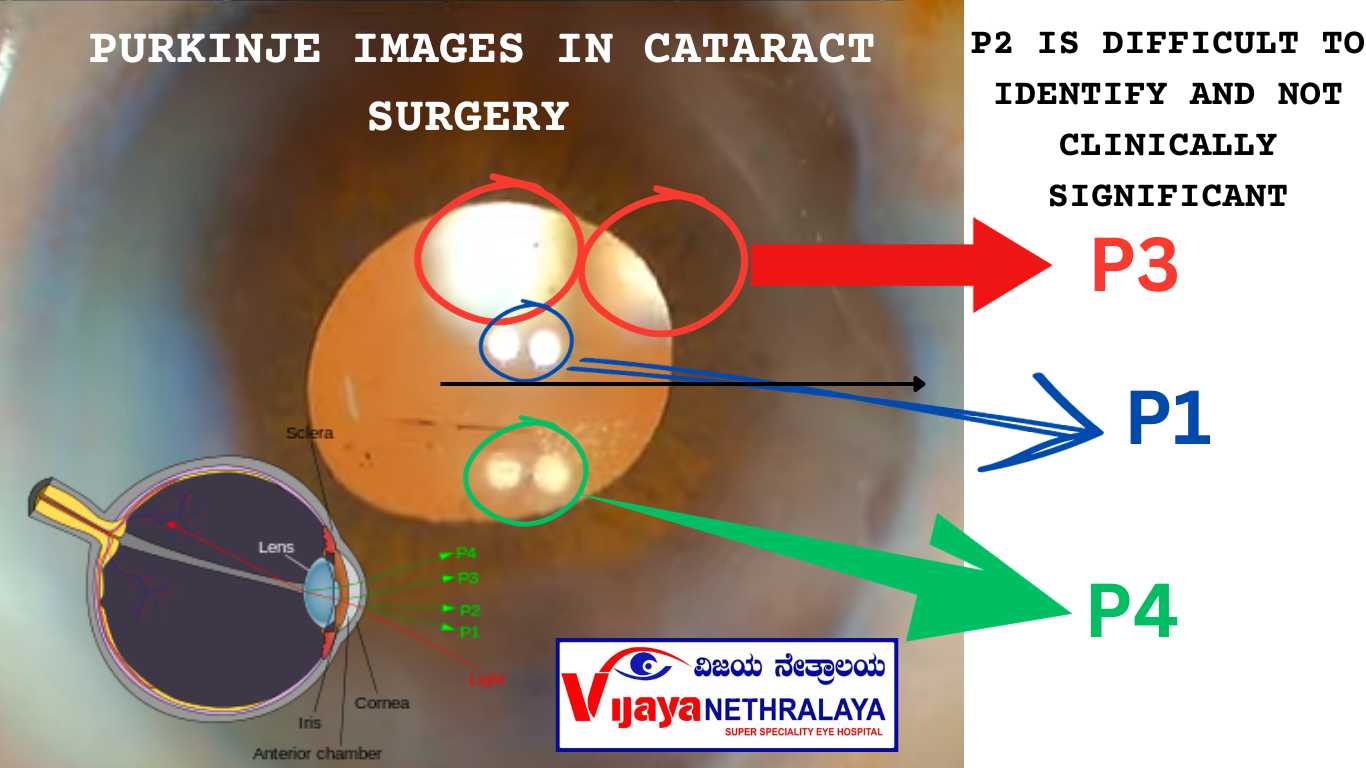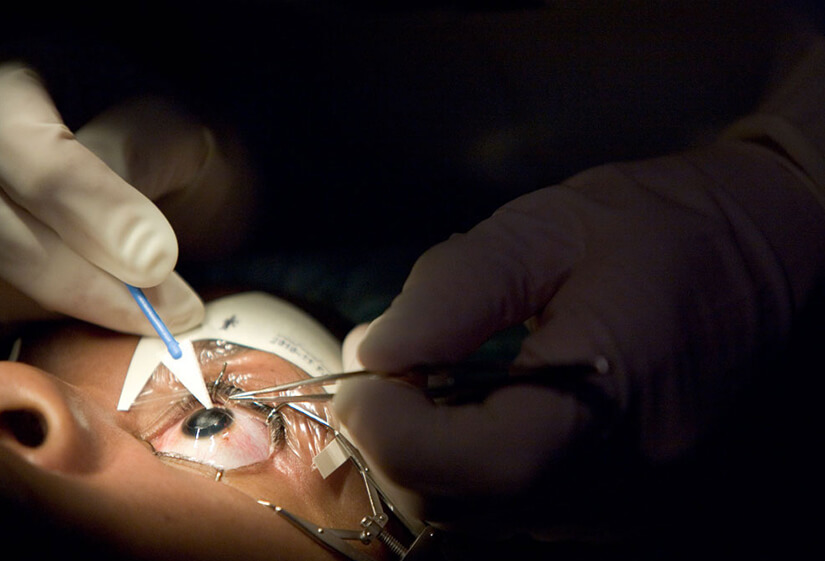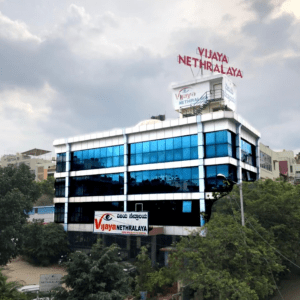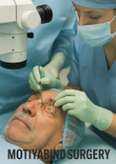The field of ophthalmology constantly evolves, with innovations and discoveries enhancing our understanding of vision and eye health. One intriguing aspect is the study of Purkinje images, which are reflections of light within the eye. While traditionally associated with understanding optical phenomena, In this blog we discuss potential applications a cataract surgeon should know.
Understanding Purkinje Images:
Purkinje images, labeled P1 to P4, represent reflections from different surfaces of the cornea and lens. This phenomenon plays a crucial role in comprehending the optical characteristics of the eye. P1 and P2, for instance, are reflections from the anterior and posterior surfaces of the cornea, while P3 and P4 correspond to reflections from the anterior and posterior surfaces of the lens.

Optical Insights: Exploring the Role of Purkinje Images in Ophthalmology
Purkinje images are very important in cataract surgery. the importance of Purkinje images and closely observing them during the surgery. Dr Sushruth Appajigowda was able to carefully avoid Lens Tilt leading to a lot of complications. Carefully monitoring Purkinje images are essential part of Cataract Surgery.
These are Confirmatory about the position of the IOL. By Viewing this video hopefully, you’ll be able to quickly identify Purkinje images and Use them in practice. it is, also referred to as Purkinje reflexes or Purkinje–Sanson images, which are reflections of objects within the eye’s structure. In a normal eye, at least four Purkinje images are typically observable.
The initial Purkinje image (P1) originates from the outer corneal surface, while the second image (P2) results from the inner corneal surface. The third Purkinje image (P3) arises from the outer (anterior) lens surface, and the fourth Purkinje image (P4) is a distinctive inverted reflection from the inner (posterior) lens surface.

Named after Czech anatomist Jan Evangelista Purkyně and French physician Louis Joseph Sanson, these reflections can also be seen within the eye itself, as light reflected from the lens surfaces may bounce back from the rear corneal surface. Eye trackers, devices used for eye position measurement, often utilize the first and fourth Purkinje images.
Fresnel’s equation expressed as Intensity (brightness) = (n’ – n)^2 / (n’ + n)^2, determines the brightness of Purkinje images by considering the refractive indices before (n) and after (n’) the reflecting surface.

Among the four Purkinje images, P1 exhibits the highest brightness, followed by P3 and P4 (which have similar brightness levels), and finally P2. This information allows for the evaluation of the eye’s surface curvatures and separations based on the intensity variations of Purkinje images.
Applications of Purkinje images include:
- Eye ball position tracking: Position of P1 and P4 are tracked by some eye trackers to determine the position of eye during refractive surgery.
- Corneal Data analysis: The Purkinje images can be used to determine the curvature of cornea and distance between corneal tissues. Purkinje images have sculpted refractive surgery.
- Determining IOL tilt: Leveraging Purkinje image data may aid in postoperative assessments, allowing surgeons to monitor the IOL tilt if any
- Cornea Surgery(Keratoplast/DALK/LASIK) : Purkinje Ring reflexes are projected on the cornea. the sutures can be adjusted looking at the ring reflex and prevent astigmatism. Ring reflex help in determining quality outcome.
Author Details:
Dr. Sushruth Appajigowda holds a prominent position as a Cornea, Cataract, Glaucoma, and LASIK Surgeon in Bangalore. He serves as the chief Cataract and Refractive surgeon at Vijaya Nethralaya Eye Hospital, Nagarbhavi Bangalore. Renowned as one of the finest LASIK surgeons nationwide, he brings with him over 12+ years of experience across multiple LASIK platforms, including ZEISS, ALCON, SCHWIND, AMO, and Bausch and Lomb. Having successfully conducted over 5000 LASIK procedures, Dr. Sushruth holds the title of a Certified Refractive Surgeon and a Fellow of the All India Collegium Of Ophthalmology. Furthermore, he stands as a distinguished speaker at various National and International Forums, using his expertise to guide you in selecting the most suitable procedure based on your health requirements.
